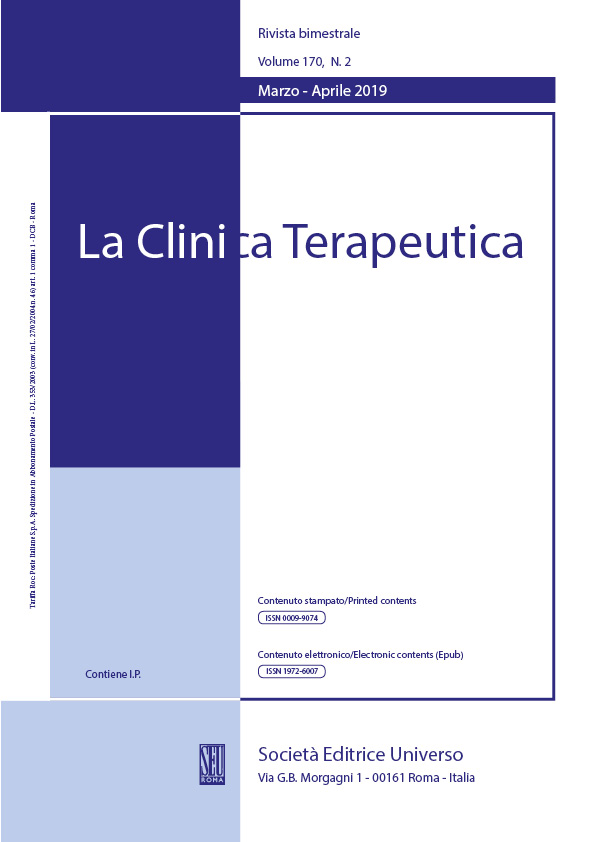Abstract
Aims
The aim of the study was to investigate the frequency, type, causes and consequences of violence and aggression experienced by Emergency Department workers during their interactions with patient, their relatives or companions and whether the phenomenon of violence at work is a specific risk factor predicting stress and possible stress related pathologies in emergency health workers. The study proposes a model of effective intervention for the prevention and management of violence and stress.
Methods
A cross-sectional retrospective study was performed with a sample of 323 healthcare workers at Department of Emergency and Acceptance of Level II and the Psychiatric Services of Diagnosis and Care of the University Hospital Policlinico Umberto I, in Rome, Italy, between June 2016 and February 2017. Data collection was conducted by a psychiatrist by means of a questionnaire method administered to each participant and by carrying out individual interviews. The two questionnaires used, both the Health Violence Questionnaire (QVS) and the Workers’ Stress Perception Questionnaire (SPQR) were designed ad hoc, after some test sessions intended for the creation of their content.
Results
Eighty-seven percent of emergency healthcare workers experienced workplace violence by patients or their relatives. More than half of healthcare workers reported multiple consequences on their emotional sphere, in particular female healthcare professionals and all those who have suffered frequent incidents of violence. Regarding the effects on lifestyle, one third reported an increase in consumption of tobacco, food and sleep disorders and changes from social relationships to social isolation and avoidance of some places. More than one third of healthcare workers reported consequences on their well-being and health, especially the female workers. Distress was associated with frequent workplace violence. Healthcare workers who experienced frequent violence indicated lack of support from hospital administration and ED management as barriers to reporting workplace violence.
Conclusions
The study confirms the diffusion of the workplace violence by patients and/or their relatives against the emergency healthcare professionals, related to the gender, the professional qualification, the role in the organization and the workplace. Almost all male and female healthcare workers reported they had suffered the effects on lifestyle, working habits and wellbeing and health following the workplace violence. Precipitating factors to violent incidents identified by healthcare professionals are consistent with the research literature. Commitment from hospital administrators, ED managers and hospital security is necessary to facilitate improvement and ensure a safer workplace for ED healthcare workers. Our study emphasizes the importance of analyzing, in addition to general job demands, the specific job demands such as the phenomenon of violence, considered a key risk factor, predictor of stress and possible mental disorders in healthcare workers operating in high-risk environments. This study confirms the importance of application of the modified model by Brough and Biggs of integrated multidimensional intervention on the prevention and management of workplace violence and work stress and shall be implemented on all three levels: individual, organizational and situational. The study also highlights the need to implement support strategies for the victims of violence
